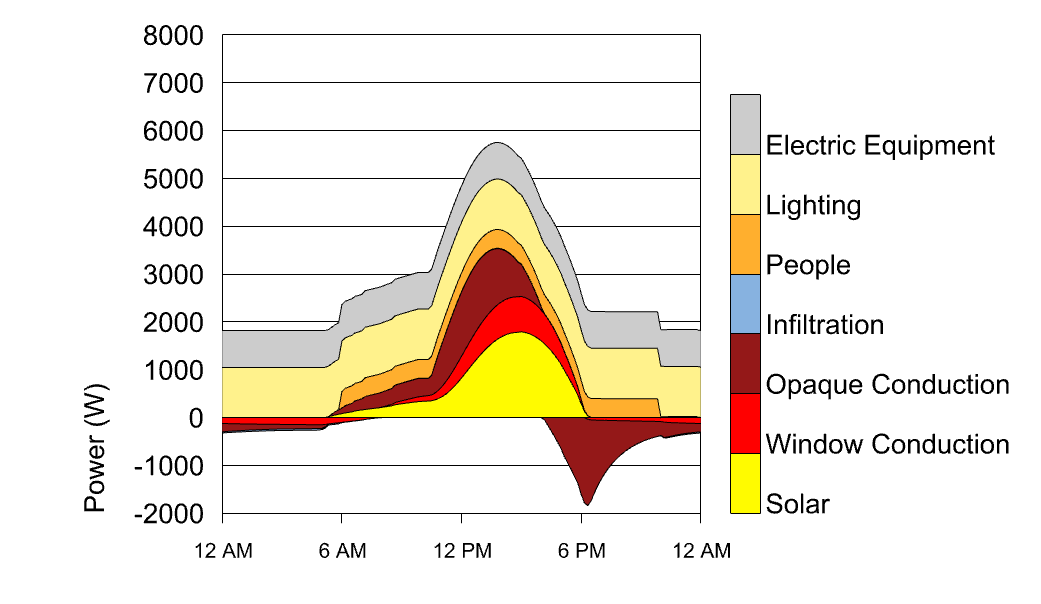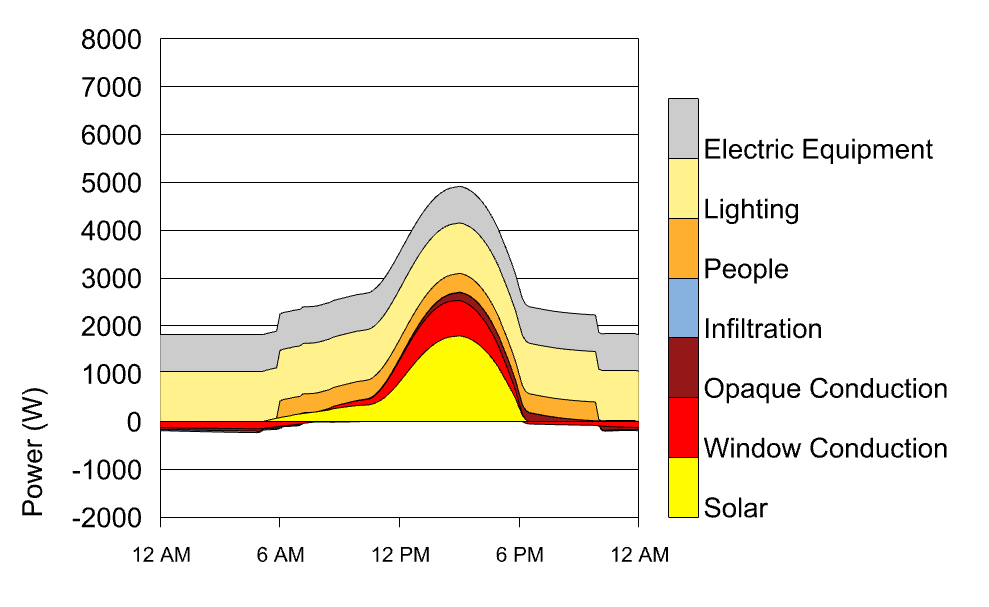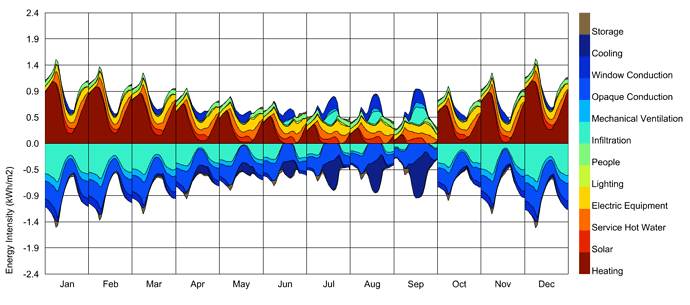Hi all,
I think I’ve found some unusual behavior in the HB Thermal Load Balance component.
Oberservation
The storage term is unusually large, even when plugging in everything correctly:
What I’ve noticed is that the face energy flow term that is supposed to be plugged into the Thermal Load Balance is unusually large for the outdoor façade:
It suggests that there’s a 2000+ W energy gain into the zone just through my 10,5 m² outdoor façade; roughly 200 W/m² (!). Whereas the ΔT between the indoor surface temperature and zone air temperature doesn’t exceed 2.4 ºC… This seems impossible to me.
Possible explanation
Now, I think I’ve found the reason as to why it reports these large numbers. The outdoor surface conducts heat to both the outside and inside. The outside being much larger because of, I assume, the larger ΔT between outside surface temperature and the outdoor air temperature because of the sun shining on the surface.
HB Read Face Result gets the Surface Average Face Conduction Heat Transfer Energy for each face, which is the average between the conduction to the outdoors and conduction to the indoors. This means that even though most of the energy is “lost” to the outdoors, it’s still counted in the energy balance.
I’ve added a custom simulation output to the E+ simulation: Surface Inside Face Conduction Heat Transfer Energy, which reports much more reasonable values with regards to the energy gain:
For good measure I’ve done the same for the outside to check if indeed that heat transfer is so large, and indeed it is:
When I plug in the Surface Inside Face Conduction Heat Transfer Energy into face_energy_flow, I’m getting a much more sensible Storage component:
The storage jumps at 7AM and 10PM are due to changing internal loads.
Conclusion
In conclusion, I think the face_energy_flow input of the HB Thermal Load Balance component is supposed to just have the Surface Inside Face Conduction Heat Transfer Energy instead of the average, so that the energy lost to the outdoors is not accounted for in the balance nor storage.
But if I’m mistaken I would greatly appreciate to hear the explanation as to why the surface flow / storage is high.
Only thing I’m not sure about is that now only opaque surfaces are considered in face_energy_flow, I couldn’t find a Surface Inside Face Conduction Heat Transfer Energy equivalent for window surfaces. So if anyone knows how to include that if necessary, please let me know!
Thank you!





 . For reference, here’s the storage remainder:
. For reference, here’s the storage remainder:


